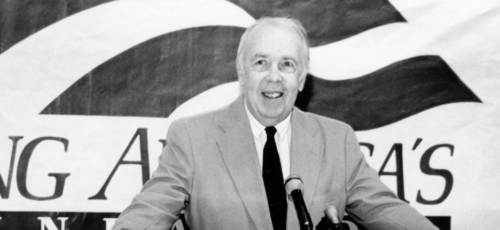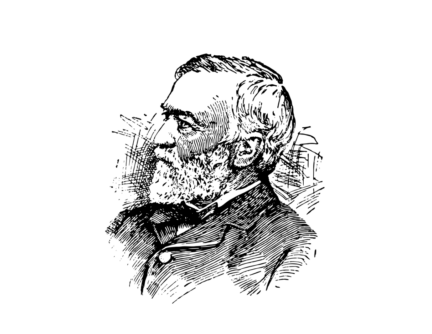It’s a cause most of us would be unlikely to refuse. Who wouldn’t want to help our veterans returning from Afghanistan or Iraq heal their wounds and adapt to the stresses of civilian life?
But as Dave Philipps shows in this fine article from the New York Times, we should have second thoughts about giving to the Wounded Warrior Project. (The Times worked in collaboration with CBS News.)
The group started in 2003, when John Melia, a Marine who was wounded in Somalia in 1992, decided to start giving backpacks filled with CDs, socks, and toothpaste to returning Iraq War veterans recovering in military hospitals. The project grew and Melia began hiring employees, including Steven Nardizzi, a civilian lawyer who was head of the United Spinal Association.
The organization’s goals, says Philipps, expanded “to include adaptive sports for disabled veterans, employment and benefits help, and retreats to teach veterans to cope with post-traumatic stress disorder.”
But in 2009, John Melia was ousted from the organization he created in a power struggle. Nardizzi became president, a position he has held ever since.
Today the Wounded Warrior Project is a $372 million a year organization, which spends $124 million on overhead, including $34 million spent on fundraising in 2014. Charity Navigator gave the group a D in 2011 and hasn’t given a grade higher than C since. Most of the donations, says Philipps, are small contributions from seniors.
When veterans’ organizations were created after World War I, they modeled themselves after fraternal orders, with lodges where vets could commiserate with their peers. Such groups as the Veterans of Foreign Wars and the American Legion strengthen civil society not only by providing a place for veterans to meet, but because lodges frequently rent their buildings to the public.
Steven Nardizzi, reached at the Wounded Warrior Project’s headquarters in Jacksonville, has a different aspiration. “I look at companies like Starbucks—that’s the model,” Nardizzi said. “You’re looking at companies that are getting it right, treating their employees right, delivering great services and great products, then are growing the brand to support all of that.”
Like far too many charities today, the Wounded Warrior Project is obsessed with metrics. One program, called Warriors to Work, which started off providing individual counseling to veterans, was suddenly changed when higher-ups demanded a quadrupling in the number of veterans placed in jobs. The result, said Dan Lessard, who ran the program for two years, was that “they would just come up with numbers based on nothing. I would push back and they would get very frustrated and yell. By the time I left, we were just throwing guys in jobs to check off a box and hit the numbers.”
Former employees told Philipps that rather than patiently helping veterans recover from their injuries, metrics-minded executives stressed a program that provided free tickets for concerts and sports, which would maximize the number of veterans served.
Renee Humphrey, who worked in the Wounded Warrior Project’s Southern California office for four years, said, “if the same warrior attends six different events, you could record that as six warriors served. You had the same few guys who loved going to free events.”
Philipps’s portrait is of an organization with a toxic corporate culture, complete with many vicious sackings. But first-class travel and fancy hotel rooms were commonplace. Philipps opens his article describing a three-day retreat the Wounded Warrior Project held at the Broadmoor Hotel in Colorado Springs after raising $225 million in 2014. On the first night of the conference, “the staff gathered in the hotel courtyard. Suddenly, a spotlight focused on a 10-story bell tower where the chief executive, Steven Nardizzi, stepped off the edge and rappelled toward the cheering crowd.”
But it gets worse! The Wounded Warrior Project successfully lobbied the California and Florida state legislatures in 2014 to water down bills “that would have required nonprofits to increase financial transparency.” One would like to know more about what these bills were.
In 2013, the project donated $150,000 to the Charity Defense Council. Nardizzi, according to the council’s website, is a member of the group’s advisory board.
If you’re someone who thinks the overhead story has two sides, and you fervently believe that charities should spend more on overhead and less on programs, well, the Charity Defense Council is for you! Yes, this group believes that the rich should get richer working for non-profits because…wait for it…it’s a First Amendment issue. The group says their First Amendment rights are violated when they are “forced to speak in the language of overhead percentages instead of the language of impact” (sic).
I didn’t think it was possible that a group could claim that it would be better if the top one percent of philanthropic salaries became the top one half of one percent, but there you are. Does Paul Krugman know about this group—or Jane Mayer?
It’s little wonder that the Wounded Warrior Project has been hammered since Philipps’s fine article appeared. The Nonprofit Quarterly notes that lots of smaller organizations with “warrior” in their titles have made it clear that they are not this group. The project has also hired crisis management public relations specialists, which is not a good sign.
Even Donald Trump, according to Politico, decided not to include the Wounded Warrior Project in the list of veterans organizations that received money in the fundraiser Trump held opposite the Republican presidential debate held in Iowa last month.
The fine reporting by the New York Times and CBS News suggests that you should think twice about giving to the Wounded Warrior Project. If you want to help veterans, consider giving to the Fisher House Foundation or Operation Homefront, two groups that pride themselves on their low overheads.
Hat tip: Mark Antonio Wright, National Review Online







Readers interested in reading more about the two bills Mr. Watkins is discussing should see Tia Mitchell, “Overhaul of Florida Charities Law Seems Headed for Passage, TAMPA BAY TIMES, April 3, 2014, and Mark Hrywna, “California Gets New Fundraising Disclosure Law, NONPROFIT TIMES, September 22, 2015. I do not know enough about fundraising law in Florida and California to express an opinion about whether these two laws were necessary, but I appreciate Mr. Watkins’s taking the time to write and making the case that the laws were not needed.
Mr. Wooster,
I am a lawyer with Webster, Chamberlain & Bean, LLP, and I work with many charities and others on fundraising and fundraising regulatory issues. Wounded Warrior Project is not a client of our firm, and I don’t know enough about WWP to have an opinion about whether anyone should give to WWP.
To answer your question about legislation in Florida and California:
Florida enacted substantial changes to its fundraising regulation regime in 2014. (Act 122, 2014) I am not familiar with the specific issues regarding which WWP was lobbying, but legislators, staff, and regulators are often unfamiliar enough with fundraising that proposed legislation will have unintended consequences, and what you call “watering down” legislation may actually improve the results for charities and the public.
The California legislation, which was enacted in 2015, is a good example. As introduced, it would have required charities to disclose to donors when a fundraising consultant had provided services in connection with a fundraising campaign, suggesting that such services are “bad,” but the same services, when provided by employees of the charity, are “good.” WWP and others, including me, explained to California that the proposal would distract donors with misleading information, and probably lead to reduced contributions to many charities. The legislation was “watered down” by deleting that proposal, and instead expanding the definition of a “commercial fundraiser” (professional solicitor), which is already subject to similar disclosure requirements. AB 556 (2015).
As you are undoubtedly aware, more legislation and regulation are not always, or even often, the cure for social problems. Regarding the legislation that WWP was lobbying against, your usual healthy dose of skepticism, combined with more understanding of the specific problems in the legislation, would have strengthened your commentary.